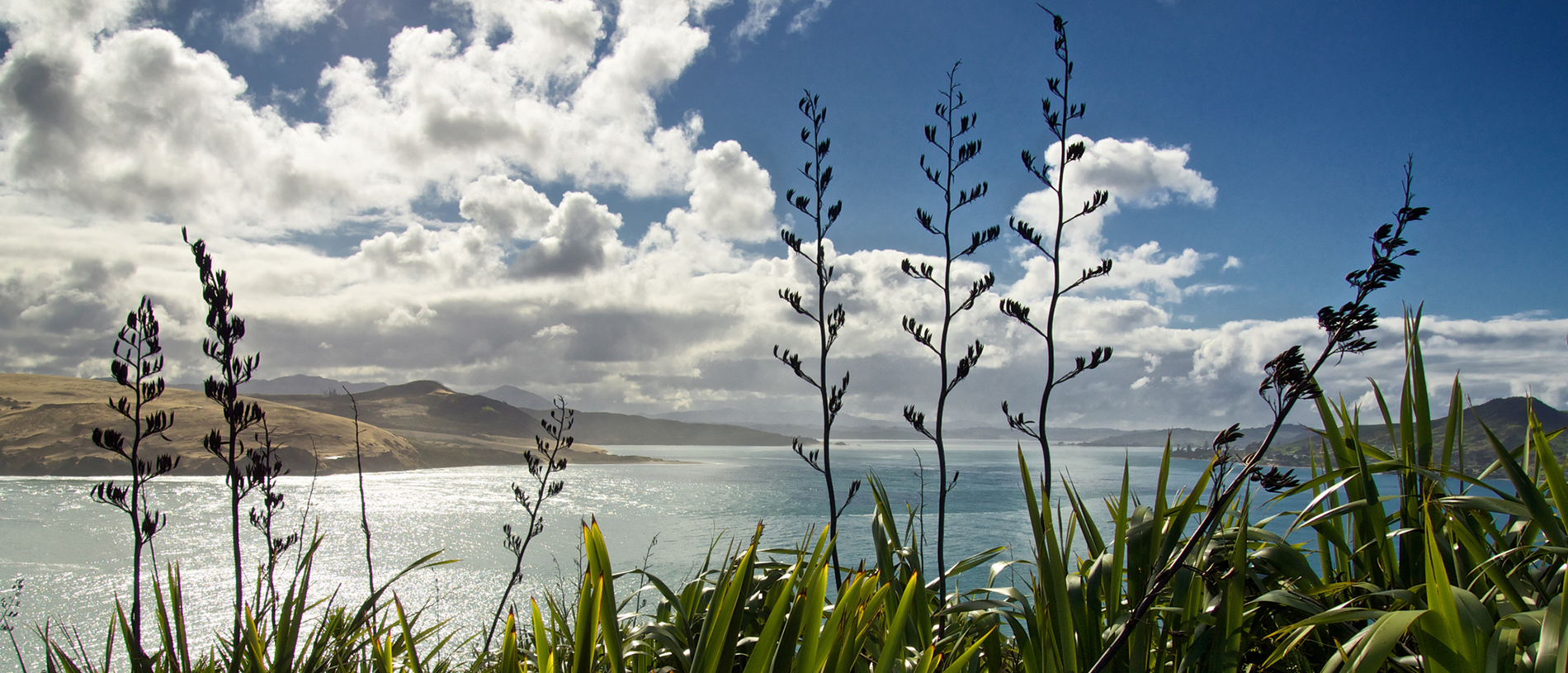
Hokianga: harbouring history
The Hokianga, stretching northeast towards the Bay of Islands on the opposite coast, has one of the longest histories of human habitation anywhere in New Zealand.

The Hokianga (which means ‘the circumstance of returning’) is named in commemoration of the legendary Polynesian navigator, Kupe, who ended his exploration of New Zealand here and departed for Hawaiki.
But it could just as easily refer to the vow you make on every occasion you spend time here because it’s a place that just keeps drawing you back.
The most rewarding direction in which to approach the Hokianga is from the south along State Highway 12, which also happens to be the leg of the Twin Coast Discovery Highway route that features the great Waipōua and the Trounson kauri forests.
About half an hour after you leave the Waipōua Forest, you come over a hill and there’s the long, turquoise Hokianga stretched out below you, with the dazzling sand dunes of the northern headland ahead of you. You drop down to the popular holiday destination of Ōmapere and you’re there, in the Hokianga proper.
The southern shore has plenty to offer the visitor. There are campgrounds at Ōmāpere, Ōpononi and Rāwene, there’s cafés and craft shops in Rāwene – one of New Zealand’s quaintest towns – and several important historic sites, including a number of the oldest churches in the country, Clendon House (the residence of early settler, trader and sometime US Consul to New Zealand, James Reddy Clendon) and a Hinuera stone statue of Opo the dolphin outside the famous Ōpononi pub. Opo was a female bottlenose dolphin who delighted New Zealanders by apparently seeking out and enjoying human contact in the shallows off Ōpononi in the summer of 1955 to 1956.
A short drive out to the lookout point on the harbour’s South Head is rewarded with spectacular views of the turbulent sandbar at the entrance to the harbour and the opposite headland’s dunes.
If you find the latter just too enticing, you can either take a water taxi from Ōpononi and land on North Head directly, or drive, taking the regular vehicular ferry service between Rāwene and Kohukohu, a former timber town on the opposite shore.
It’s a struggle to the top of the dunes, especially in high summer, where the fine white sand reflects the blazing sun full blast, but it’s rewarding: a handful of giant strides will get you down in seconds from the heights it took you ten minutes to scale. Better yet, if you took the precaution of equipping yourself with a plastic surfboard, you can toboggan down at breakneck speed.